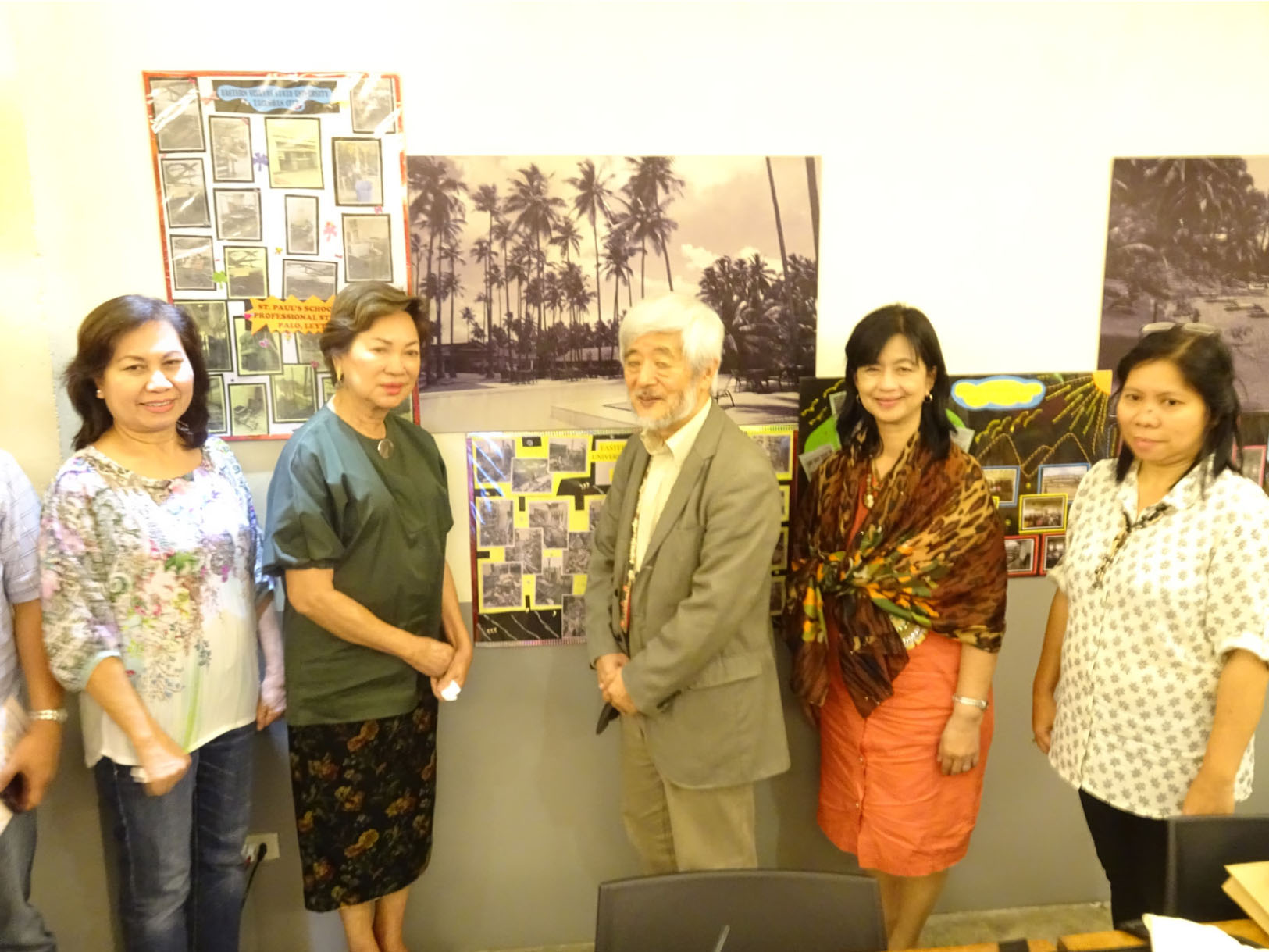TACLOBAN CITY – Detained Albuera, Mayor Rolando Espinosa, Sr., who is facing charges for violation of firearms and illegal drugs appeared in Baybay City court on October 12 for his arraignment.
He pleaded not guilty to the illegal possession of firearms case while his lawyer, Atty. Lailanie Villarino filed a motion to quash or make the warrant of arrest invalid for the case on violating the Comprehensive Dangerous Drugs Act of 2002.
The arraignment started at 9:26 a.m. and lasted for only 30 minutes inside the heavily guarded Regional Trial Court Branch 14 in Baybay City under Judge Carlos Arguelles.
Accompanied by his family, the mayor’s camp filed a motion to transfer custody to the Albuera police station and motion to fix amount of bail for the case on violating the Comprehensive Firearms and Ammunition Regulation Act.
Prosecutors were given five days to study the motions. The next hearing was scheduled on October 19.
Espinosa has been detained at the Leyte sub-provincial jail in this city after his arrest on October 5.
The mayor, whose son, Kerwin, the region’s top drug lord, is alone in a detention cell.
Provincial jail warden Homobono Bardillon said isolating the mayor from other inmates is part of their security measures, considering that Espinosa is a high profile detainee.
“We can assure of the mayor’s safety in Baybay sub-provincial jail especially with the deployment of more policemen here,” Bardillon added.
It can be recalled that Espinosa surrendered to Police Chief Director General Ronald Dela Rosa on Aug. 2 few hours after President Rodrigo Duterte demanded for his surrender and Kerwin within 24 hours or face a “shoot on sight.”
The son remained at-large.
After four days, Dela Rosa kicked out Espinosa from his official residence after the son failed to meet the deadline for him to surrender.
He returned to his hometown on Aug. 16 and stayed at the municipal hall day and night for about a week before he asked for police protection.
Driven by fear for his life, the mayor had temporarily held office at the town police station from Aug. 25 until his arrest. His son has been hiding in Malaysia, according to police reports. (SARWELL Q.MENIANO/RONNIE C. ROA)
Albuera Mayor Espinosa pleads not guilty on drugs, firearms charges
‘Yolanda’ survivors narrate experiences during story-sharing event


(Photo by Vicky C. Arnaiz)
3rd year commemoration
VICKY C. ARNAIZ
PALO, Leyte- Trinidad Barbosa could still poignantly recall the harrowing experience that she and her family went through when supertyphoon ‘Yolanda’ ripped through the region in 2013.
Barbosa was rendered widow after her husband died when their house collapsed due to the pounding of strong winds and heavy rain generated by Yolanda, the worst typhoon ever witnessed by world.
While their lives, to count her eight children, were clear in danger, Barbosa said that they could not just leave her dead husband inside at their destroyed house in Barangay Guadalupe, a coastal village in Baybay City.
Her husband, suffering from a debilitating ailment, was already dead even before Yolanda made its landfall
“I am sickly and it kept my children worried. I don’t want to leave my deceased husband alone in the house. I kept on crying that my son had to carry me to transfer to the evacuation center,” Barbosa, 52, in a heart wrenching narration said.
She said her children tied her husband to the bed then tied it to another bed. After the fury of Yolanda waned around 12 noon, she found there was nothing left of their belongings except the bed and her husband.
“All were washed out,” recalled Barbosa, whose story left the audience misty-eyed.
Barbosa was among those who participated and narrated their stories related to the onslaught of Yolanda dubbed as “Yolanda survivors: Show and Tell” organized by the Eastern Visayas Region Librarians Council (EVRLC) on Thursday (Oc.7) in this town.
The sharing of stories was done after the opening of the exhibit of photos and stories at the venue.
Elizabeth Mendoza, representative of Natalia Ilieva, executive assistant to the secretary-general of Asia-Pacific Broadcasting Union (ABU) said that “we are here to help you archive your stories so that others will learn from your experiences.”
Yolanda is considered as the world’s strongest typhoon to hit inland and hearing stories and archiving it is very important.
“We are here because you never wean the past. Life goes on and your stories are to be told in all forms of media. We have to broadcast, print and digitalized it,” Mendoza, director of Courseline Training Center (CTC) based in Cagayan Valley, said.
“If one has no Internet connection at least you have the printed materials in your hand,” she added.
Asia-Pacific Broadcasting Union is an organization based in Kuala Lumpur, Malaysia with 280 broadcaster-members across the world.
It is one of the organizations that immediately responded the call of help after the monster typhoon hit the Philippines.
Lately, CTC is doing literacy campaign on health education, disaster preparedness especially for the persons with disability (PWDs), media literacy and community education with the support from ABU.
Palo Mayor Remedios “Matin” Petilla graced the event and inspired the group of how her constituents were helping each other after the massive typhoon.
“Helping others would also heal ourselves,” she said.
The stories were heartbreaking which the members of the library association hope to published the book.
The activity was also in line with the celebration of the United Nations International Disaster Reduction Day on Oct. 13, 2016.
Catbalogan mayor announces major projects, programs

First 100 days in office
CATBALOGAN CITY-The mayor of this city, Stephany Uy-Tan, reported that her first 100 days in office of her second term was remarkable, citing several projects and programs implemented during the period.
Uy-Tan, for one, reported that during the first 100 days in office, she had signed an agreement with the management of the Philippine Primark Properties, Inc. which will construct a business center in Catbalogan.
The proposed business center which is expected to house some of the country’s well-known business establishments will be located near the city’s public market.
“Before the end of this year, Primark will also help in repairing our central public and coastal market,” the city mayor said.
Uy-Tan also reported that the income of the city government for the first quarter has reached P55 million which is just a P9 million difference from their target collection for this fiscal year.
The City Treasurer’s Office had earlier made a target collection from local taxes of P 64 million.
The city mayor also reported that Catbalogan’s share on internal revenue allotment has now reached P547 million which is higher compared to last year’s P466 million.
In her report to her people, Mayor Uy-Tan also said that she had initiated several other projects that could help Catbalogan become a competitive city in terms of attracting more investors and in the process, help it become economically developed.
For one, she established the City Economic Enterprise and Investment Potentials charged to coordinate with potential investors to the city for them to look, for instance, their desired locations where they could put up their businesses.
Mayor Uy-Tan also said that she is also strengthening their campaign to attract more tourists by putting up tourism center and tour packages within the city.
Protecting and preserving the city’s environment from continued climate change is also among the priority programs that she initiated in her first 100 days in office which included adopt-a-estero campaign and proper waste management.
She also reported that a housing project has been initiated by her administration. (ROEL T. AMAZONA)
Ex-soldier nabbed in buy-bust in Northern Samar
MONDRAGON, Northern Samar- A former soldier who was tagged among in the list of the high value targets of this town was arrested in a buy- bust operation.
Arrested was Marvin Huavas, 37, said to be a former soldier and a resident of Barangay Chitongco, this town.
The suspect, who was also known as “Hagger,” was arrested October 8 around 10:35 am during a buy-bust operation conducted by the personnel of the Mondragon police station.
Confiscated from Huavas were five pieces of transparent plastic containing of suspected shabu or methamphetamine hydrochloride, one P500 bill, mobile phone and motorcycle, among others.
The search and inventory of the seized items were made in the presence of barangay councilor Roman Dipad Jr; court employee Emilio M. Tampon and media representative Eugene Montaño Enano.
Suspect was listed as the Mondragon Municipal Police Station Top 7, Sibat 2 target.
Arrested person was brought to Mondragon municipal police station for proper disposition. (PR)
Drug leader, live-in partner arrested by Tacloban police in a sting operation
TACLOBAN CITY- One of the city’s high value target on drug watch was arrested by police authorities together with his live-in partner during a buy-bust operation.
Arrested was Sherwin Costibolo, 37, during a sting operation Tuesday (Oct.11) at around 3:30 pm in Barangay 91, Abucay district, this city.
Also arrested was Costibolo’s live-in partner, Vida Sorayda Omlang.
Seized from the two suspects were six pieces of medium size heat sealed transparent sachet containing suspected shabu, one unit Cherry Mobile cellular phone and three pieces of P100 bills being used as marked money.
Both suspects were listed as high value targets (HVTs) level 2 being Sub-Leaders of Quintana Group by the Tacloban City Police Station.
Confiscated pieces of drug evidence were turned over to the Regional Crime Laboratory Office (RCLO8) for qualitative and quantitative analysis while the pieces of non-drug evidence were turned over to TCPO evidence custodian.
Suspects are now under the custody of TCPO custodial facility while cases for violation of sections 5 & 11 of RA 9165 are being prepared for filing before the City Prosecutor’s Office.
The operation was conducted in coordination with Philippine Drug Enforcement Agency (PDEA) 8 under the supervision of S/Supt.Rolando Bade, acting city director of Tacloban City Police Office. (PR)
Popcom-8 chief optimistic on full implementation of RH law under Duterte administration
TACLOBAN CITY- The controversial reproductive health (RH) law is seen to be fully enforced under the current administration of President Rodrigo Duterte.
Thus said the regional director of the Commission on Population (Popcom) Elnora Pulma who said that there are still sectors that continue to refuse to implement the law approved in 2013.
Pres. Duterte had earlier said that he is committed in implementing Republic Act 10354, otherwise known as the Responsible Parenthood and Reproductive Health Act.
He made this commitment when he delivered his first State of the Nation Address (Sona) last July 25.
“Since its approval on January 17, 2013 and the signing of the internal rules and regulations on March 15, 2013, the road to the implementation of the law was not easy,” Pulma said.
The Catholic Church mainly opposes the passage of the law describing it as promoting abortion and even encouraging premarital sex.
Pulma said that the law, contrary to the perception and position of those who opposes it, will help the right of individuals like the right to health and right to sustainable development, among others.
The Popcom regional chief urged the media to help them to inform the public, particularly those who are against it, on its benefits.
“We need the media (and) the local government units as the primary implementer of the law,” Pulma said.
Pulma lamented that they have received reports that even those in the health sectors are also adamant in implementing RA 10354 on ground of their personal or religious convictions.
(LIZBETH ANN A. ABELLA)

